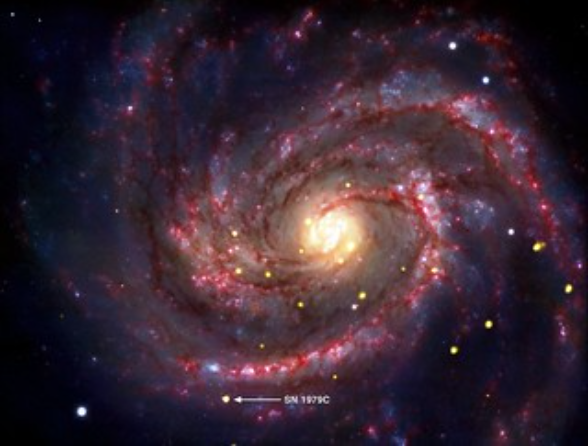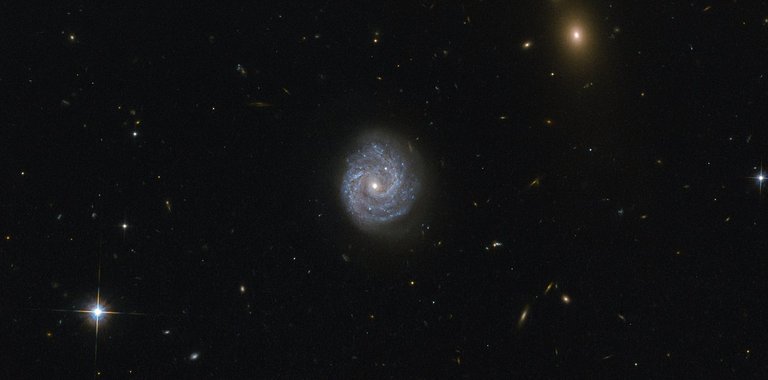Like Black holes, white holes are currently hypothetical scenarios that might never have existed or even exist later in the future. When Albert Einstein proposed his theories about black holes, it took many mores before an actual black hole was observed. Black holes are the solutions to Einstein's problem of general relativity Here are things surrounding the existence of white holes.
White holes were first proposed in 1964 by Russian cosmologist Igor Novikov. Like black holes, they are also a solution to Einstein's field equation (this is a maximally extended version of the Schwarzchild metric), which talked about eternal black holes having no charge or rotation. To be clear, maximally extended would mean that the spacetime does not have any edges, that is, any free-falling particle on a trajectory in spacetime will continue on this path eternally except the particle comes into contact with a gravitational singularity such as the one present in a black hole's interior.

For the satisfaction of this requirement, asides from the presence of the black hole's interior where particles fall through when they pass the event's horizon, a white hole region that allows us to be able to extrapolate the path these particles take away from the event horizon exists (as observed by an outside observer). To this outside observer, these inward falling particles will spend eternity reaching the horizon of the black hole in the future. On the other hand, outwardly falling particles will also fall for an infinite time while reaching the horizon of the white hole but it will be in the past.
Just like the black hole and a faraway observer, the white hole is also going to appear eternal to them, this is in regards these particles moving away from the white hole's center can pass the outside observer at any given time, also particles moving inward which eventually pass through the black hole's center can also pass this outside observer at any time.
General relativity intimates us that the collapse of compact mass form such as a star creates a black (gravitational collapse). There is an Einstein-Cartan theory that explains that "the minimal coupling between torsion and Dirac spinors generates a repulsive spin–spin interaction which is significant in fermionic matter at extremely high densities'' This interaction will prevent a gravitational singularity from forming.
Rather, the matter collapsing on the opposite end of the event horizon reaches a very large but limited density and rebounds, this leaves it forming an Einstein–Rosen bridge. The other side witnesses and becomes an entirely new universe. The inhabitants and observers of the young universe (in that universe) see the parent universe as the only white hole.
Consequently, the seen universe becomes the Einstein–Rosen center of a black hole that exists as one of possibly many inside a much larger universe. The Big Bang was a non-singular Big Bounce at which the observable universe had a finite, minimum scale factor. Many believe a white hole was responsible for the formation of our universe.
A white hole is an abnormal kind of singularity - what many would call a naked singularity. Singularities like black holes cannot be directly observed, because of the danger attached to being around a black hole and the escape velocity (the speed you need to escape the black hole's gravity) is greater than the speed of light, so nothing can escape from it. The singularity is protected by the black hole's event horizon, the surface that separates us from the black hole.
Theoretically, when we have a singularity, the space-time continuum is broken, that is, time and space cease to exist. To solve this problem, event horizons were introduced. A naked singularity does not have an event horizon. According to the fundamental principles of general relativity, the universe inhibits the existence of naked singularities. The idea makes more sense in the cosmic censorship hypothesis. With the current numerical simulations and current theories of quantum gravity, however, they all hint at the possibility of naked singularities.
While black holes come to be as a result of the collapse of stars, white holes are the exact opposite, except they are hypothetical.
White holes are caused when stars come to being? As much as blackholes pull everything within the Schwarchild radius towards themselves, white holes would push materials out of themselves. Just like how hypothetical black holes used to be, white holes are still very hypothetical and many physicists believe an anomaly like a white hole can never exist.
There are a handful of physicists who believe that white holes are not just hypothetical scenarios, most prominent among them are two French physicists, Carlo Rovelli and Hal Haggard, both are from the Aix-Marseille University in France. Using loop quantum gravity, which is a study of everything that happens around the black hole, they hope to be able to explain this. A wider audience of physicists also believes white holes might explain the origin of the universe. Theoretically speaking, A black hole would rebound as a white hole after the black hole has compressed to the smallest possible size.
Now to a question that might have crossed your mind.
What would happen if a white hole and a black hole collides?
Asides from the fact that they are highly impossible, when there are collisions between objects that have different time directions, it is usually derived that when these collisions happen, the object with a reverse time arrow will quickly switch its time direction for which only a microscopic perturbation is enough. This means that in a universe where there is a black and a white hole, after their first collision the white hole becomes a black hole eventually leaving the system with two black holes.
This is just one likely answer to the question.

Since the white holes and the black holes are opposite, they can not be on a collision course. Likes attract likes, two black holes can only attract each other, two white holes can only attract each other, not a black hole and white hole attracting each other. White holes and black holes are kept apart by some sort of system or principle, this is in the same way dualities like matter and antimatter are kept apart. They are both very similar however at different parts of their existence, this would make the white hole to be in an expansive stage while the black hole is in a Recessive stage.
Eventually, the White holes move on to being the black holes then White Holes again then Black holes over again and the cycle continues. Essentially, a black hole from the other dimension would be a white hole. The black hole in this dimension would be creating an anti-Universe in the opposite dimension.
Thanks for your contribution to the STEMsocial community. Feel free to join us on discord to get to know the rest of us!
Please consider supporting our funding proposal, approving our witness (@stem.witness) or delegating to the @stemsocial account (for some ROI).
Please consider using the STEMsocial app
app and including @stemsocial as a beneficiary to get a stronger support.